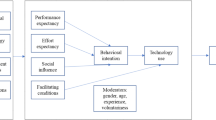Abstract
Stage-gate process is a project management technique that has been used to manage major technology development and deployment projects for over 50 years. It emphasizes quality, risk, and value, and provides an orderly framework for decision making with multiple projects carried out concurrently. This paper will examine the potential application of this process to NDE 4.0 developments. This paper will also explore the factors that make a stage-gate process successful, and how biases affect the outcomes of gate reviews. It explores which biases are problematic and how we can de-bias our own interpretation of them through conscious awareness and re-thinking the Stage-Gate Process. It also discusses how to create an environment where biases are minimized or eliminated. During research and reporting of this manuscript, the human authors synthesized their decades of experience in engaging with technology development decisions, with contributions from an artificial intelligence agent GPT-3 on human biases and motivations. This was done to capture the firsthand experience of collaborating with AI in the spirit of increasing the role of machine intelligence in human–machine systems, typical of NDE. Since this appeared to be an innovative approach, the authors decided to use the gated process in creating this paper with AI as a co-author. The details are presented as a case study within the paper. The topic is important because, managers are struggling to embrace the NDE 4.0 initiative, despite its importance and their willingness. Leveraging AI partnership to even address this important topic is a testament to cognitive capability of learning machines to help inspection systems with creating test procedures, making decisions, and creating test reports. This manuscript is the first attempt at qualitative treatment of human factors in gated innovation process with research assisted by an Artificial Intelligence based language model (non-human). The first paragraph of the abstract above is completely AI generated.







Similar content being viewed by others
References
Vrana, J., Singh, R.: Digitization, digitalization, and digital transformation. In: Meyendorf, N., Ida, N., Singh, R., Vrana, J. (eds.) Handbook of Nondestructive Evaluation 4.0. Springer, Cham (2021)
ISO 56002:2019: Innovation Management Standard—Guidance
Singh, R.: Purpose and pursuit of NDE 4.0. Spec. Issue Mater. Eval. 78, 785–793 (2020)
Singh, R.: Inspiring Next Innovation Mindset—Why Not … Start with the Why Not? Outskirts Press, Book (2020)
Vrana, J., Singh, R.: Introduction to NDE 4.0. In: Meyendorf, N., Ida, N., Singh, R., Vrana, J. (eds.) Handbook of Nondestructive Evaluation 4.0. Springer, Cham (2021)
Singh, R.: Inspiring Next Innovation Value Chain—How About … Best in the World? Outskirts Press, Book (2020)
Vrana, J., Singh, R.: NDE 4.0—a design thinking perspective. J. Nondestruct. Eval. 40, 8 (2021). https://doi.org/10.1007/s10921-020-00735-9
Vrana, J., Singh, R.: Cyber-physical loops as drivers of value creation in NDE 4.0. J. Nondestruct. Eval. 40, 61 (2021). https://doi.org/10.1007/s10921-021-00793-7
Mihaly, H.: From NASA to EU: the evolution of the TRL scale in Public Sector Innovation. Innov. J. 22, 1–23 (2017)
U.S. Government Accountability Office: Best Practices—Better Management of Technology Development Can Improve Weapon System Outcomes. NSIAD-99-162 (July 1999)
U.S. Government Accountability Office: Best Practices—Capturing Design and Manufacturing Knowledge Early Improves Acquisition Outcomes. GAO-02-701 (July 2002)
Singh, R.: NDE 4.0—the next revolution in nondestructive testing and evaluation: what and how? Mater. Eval. 77, 45–50 (2019)
Thamhain, H.: Applying stage-gate processes in concurrent engineering. Wescon/96, 1996, pp. 2–7, (Oct 1996). https://doi.org/10.1109/WESCON.1996.553955. https://ieeexplore.ieee.org/abstract/document/553955
Sethi, R., Iqbal, Z.: Stage-gate controls, learning failure, and adverse effect on novel new products. J. Mark. 72(1), 118–134 (2008)
Pohl, R.F.: Cognitive illusions: a handbook on fallacies and biases in thinking, judgement and memory. Psychology Press. ISBN 978-1-84169-351-4 (2004)
Klingebiel, R.: Research: how to get better at killing bad projects. https://hbr.org/2021/04/research-how-to-get-better-at-killing-bad-projects (April 02, 2021)
TNW News: ProWritingAid sets AI loose to improve your writing like a trusted editor. https://thenextweb.com/news/prowritingaid-sets-ai-loose-to-improve-your-writing-like-a-trusted-editor (July 01, 2021)
GPT-3: A robot wrote this entire article. Are you scared yet, human? https://www.theguardian.com/commentisfree/2020/sep/08/robot-wrote-this-article-gpt-3 (Sept 08, 2020)
Porr, L.: Can AI and GPT-3 replace authors? Writer on the side. https://podcastnotes.org/writer-on-the-side/can-ai-and-gpt-3-replace-authors/ (Oct 21, 2020)
Aalho, J.: I wrote a book with GPT-3 AI in 24 hours—and got it published. https://medium.com/swlh/i-wrote-a-book-with-gpt-3-ai-in-24-hours-and-got-it-published-93cf3c96f120 (June 12, 2021)
Mavuduru, A.: What is GPT-3 and why is it so powerful? https://towardsdatascience.com/what-is-gpt-3-and-why-is-it-so-powerful-21ea1ba59811 (Feb 17, 2021)
Vrana, J.: The core of the fourth revolution: industrial internet of things, digital twin, and cyber-physical loops. J. Nondestruct. Eval. 40, 46 (2021). https://doi.org/10.1007/s10921-021-00777-7
Acknowledgements
Authors acknowledge the willingness of OpenAI to provide access to the GPT-3 Beta version. They are also grateful to Dr. Johannes Vrana of Vrana GmBH and Dr. Anukram Mishra of Genus Power Infrastructures for their continued support of this collaboration.
Author information
Authors and Affiliations
Consortia
Corresponding author
Additional information
Publisher's Note
Springer Nature remains neutral with regard to jurisdictional claims in published maps and institutional affiliations.
Rights and permissions
About this article
Cite this article
Singh, R., Garg, V. & GPT-3. Human Factors in NDE 4.0 Development Decisions. J Nondestruct Eval 40, 71 (2021). https://doi.org/10.1007/s10921-021-00808-3
Received:
Accepted:
Published:
DOI: https://doi.org/10.1007/s10921-021-00808-3




